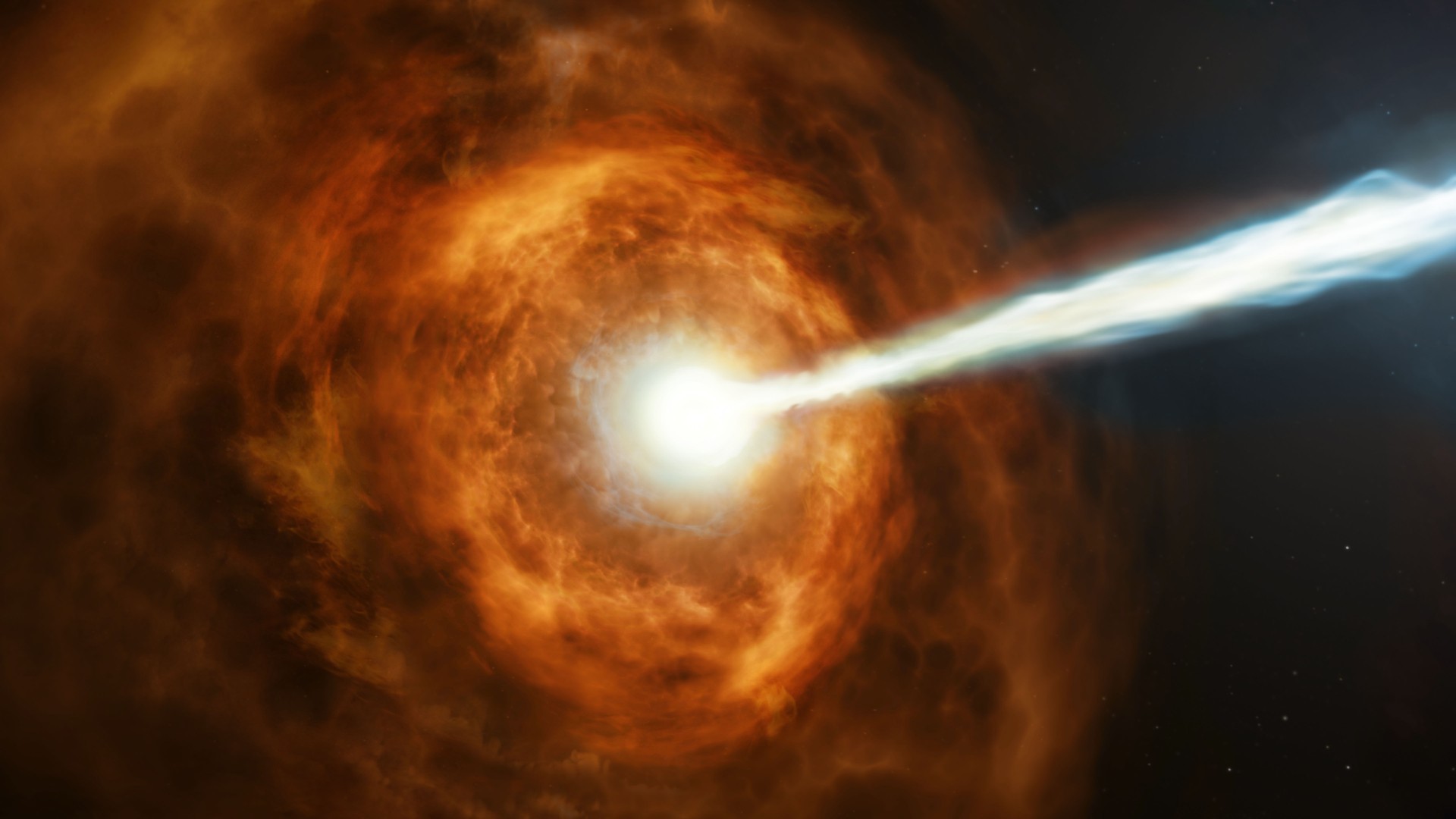China is hunting the world's most elusive particles a mile beneath the ocean floor
China is deploying thousands of sensors nearly a mile under the ocean's surface, to monitor the darkness for flashes of light that reveal the presence of a neutrino.

China is building a detector deep beneath the ocean surface to hunt for the world's most elusive subatomic particles.
Every second, tens of trillions of these ghostly neutrinos stream through Earth (and your body) without interacting with anything. Occasionally, these neutrally charged particles will collide with a stray atom's nucleus, emitting a nearly undetectable spark of light.
This spark of light helps scientists not only know that the neutrino was there but also identify from where it might have originated. Some neutrinos come from nuclear reactions within the sun, where atoms fuse together deep within the star. Those fusion reactions release neutrinos, which zip away from the sun within seconds. Some neutrinos come from nuclear fission, such as within nuclear reactors. According to the Department of Energy, even the decaying potassium within a banana can release neutrinos. Scientists also recently spotted neutrinos in the Large Hadron Collider for the first time.
But some neutrinos come from outside the solar system. These high-energy neutrinos may originate from black holes, supernovas, pulsars or some other event that scientists haven’t observed yet. It's these high-energy neutrinos that scientists from the Chinese Academy of Sciences are trying to find.
The new detector will be built with 55,000 sensors suspended 0.6 miles (1 kilometer) beneath the ocean's surface, the project lead researcher, Chen Mingjun, told Xinhua Net, China's state-run news agency. The sun's rays can't travel that deep, which will help the sensors detect neutrinos and distinguish them from solar neutrinos.
"The clean water will help increase the chance of detecting neutrino signals," Chen said.
Scientists have to build neutrino detectors in areas with a large amount of transparent materials in order to better spot the unpredictable flashes of light that reveal a neutrino. Existing detectors include the National Science Foundation’s IceCube Neutrino Observatory in Antarctica, which covers around 0.2 cubic mile (1 cubic kilometer) with 5,160 sensors nearly a mile under the ice. Down there, the ice is clear enough that the sensors can pick up the tiny flashes of light.
Get the world’s most fascinating discoveries delivered straight to your inbox.
The Chinese detector won’t be the only underwater neutrino detector. Russia is building the Baikal Gigaton Volume Detector (Baikal-GVD) in Siberia's Lake Baikal, the world’s deepest lake. Then there’s the upcoming European Cubic Kilometer Neutrino Telescope, a multi-institution collaboration that will hunt for neutrinos in the Mediterranean. There’s also the Pacific Ocean Neutrino Experiment, another multi-institution collaboration working on a detector in the Pacific Ocean, off the coast of British Columbia in Canada.
However, the Chinese detector will be much bigger. Its 55,000 sensors will cover about 7 cubic miles (30 cubic km), Chen said.
One specific goal of the detector would be to figure out whether gamma rays and high-energy neutrinos might come from the same intergalactic sources. In 2021, the Chinese Large High Altitude Air Shower Observatory detected gamma rays that researchers hypothesize originate in the same place as cosmic rays, or high-speed subatomic particles from outside the solar system. If the researchers detected neutrinos coming from the same source, "we can determine the origin of the cosmic rays," Chen said.

JoAnna Wendel is a freelance science writer living in Portland, Oregon. She mainly covers Earth and planetary science but also loves the ocean, invertebrates, lichen and moss. JoAnna's work has appeared in Eos, Smithsonian Magazine, Knowable Magazine, Popular Science and more. JoAnna is also a science cartoonist and has published comics with Gizmodo, NASA, Science News for Students and more. She graduated from the University of Oregon with a degree in general sciences because she couldn't decide on her favorite area of science. In her spare time, JoAnna likes to hike, read, paint, do crossword puzzles and hang out with her cat, Pancake.



